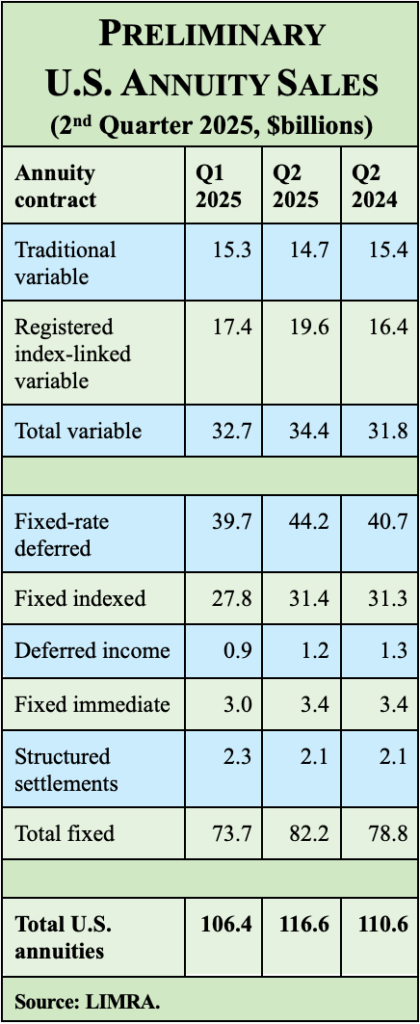Treasury rates are in the tank. Stock pickers are perplexed. No wonder there’s renewed interest in equity-indexed annuities, those controversial insurance products that sold so well under similar market conditions in the early and mid-2000s.
But there’s a less complicated way to duplicate the effects of EIAs, according to a paper in the May 2009 issue of the Journal of Financial Planning that compared EIAs unfavorably with balanced portfolios.
What was surprising was the drollness of the article, which was entitled “Equity Indexed Annuities: Downside Protection, But at What Cost?” and written by Patrick J. Collins, Huy D. Lam, and Josh Stampfli of Schultz Collins Lawson Chambers Inc. in San Francisco.
“When considering EIA contracts, it is wise to remember: Selling guarantees is like smoking Cuban cigars while driving a dynamite truck. You better do it carefully,” the authors remark at one point.
Collins, Ham and Stampfli set out to compare EIA performance with that of non-insurance investments in hopes of discovering why risk-averse investors would be attracted to these hard-to-understand products whose returns are so unpredictable.
“There is no way to judge ex-ante how an EIA contract will perform either on an absolute or a relative basis,” the authors wrote. “This is not merely a statement about the uncertainty of investment outcomes; rather, it is an acknowledgement that each EIA contract has so many moving parts that are under the discretion of the issuing insurer that it is difficult to determine whether company A’s EIA structure is better or worse that company B’s.”
The authors conducted thousands of simulations and found that a risk-averse investor’s money would be better off in an old-fashioned diversified investment than in an EIA —except in an unusual outcome known in some circles as a “fat tail” event.
In one simulation, the authors compared a $100,000 investment in an EIA with an equal investment in a portfolio composed of an S&P 500 Index fund (20%) and Treasuries (80%). Over a period of seven years, the EIA returns ranged from $110,689 to $179,952.
The balanced portfolio, by contrast, returned between $116,924 and $199,804, with a median expected return of $147,433. The probability of those outcomes was 90%. Only under the rarest and most adverse market simulations did the EIA perform the investment.
With these results in hand, the authors could only speculate as to the source of the modest popularity that EIAs enjoy.
“The source of demand may reflect consumer willingness to pay a premium for a ‘pre-fabricated’ product that provides downside protection without the inconvenience of investment portfolio management, a lack of awareness of the potential costs of acquiring downside protection through an annuity-based solution, the tax-deferral benefits of the annuity contract structure, or the efficacy of a well-designed product marketing campaign,” they wrote. “Whatever the factor or factors determining EIA sales growth, the discrepancy between theory and reality remains puzzling.”
© 2009 RIJ Publishing. All rights reserved.

